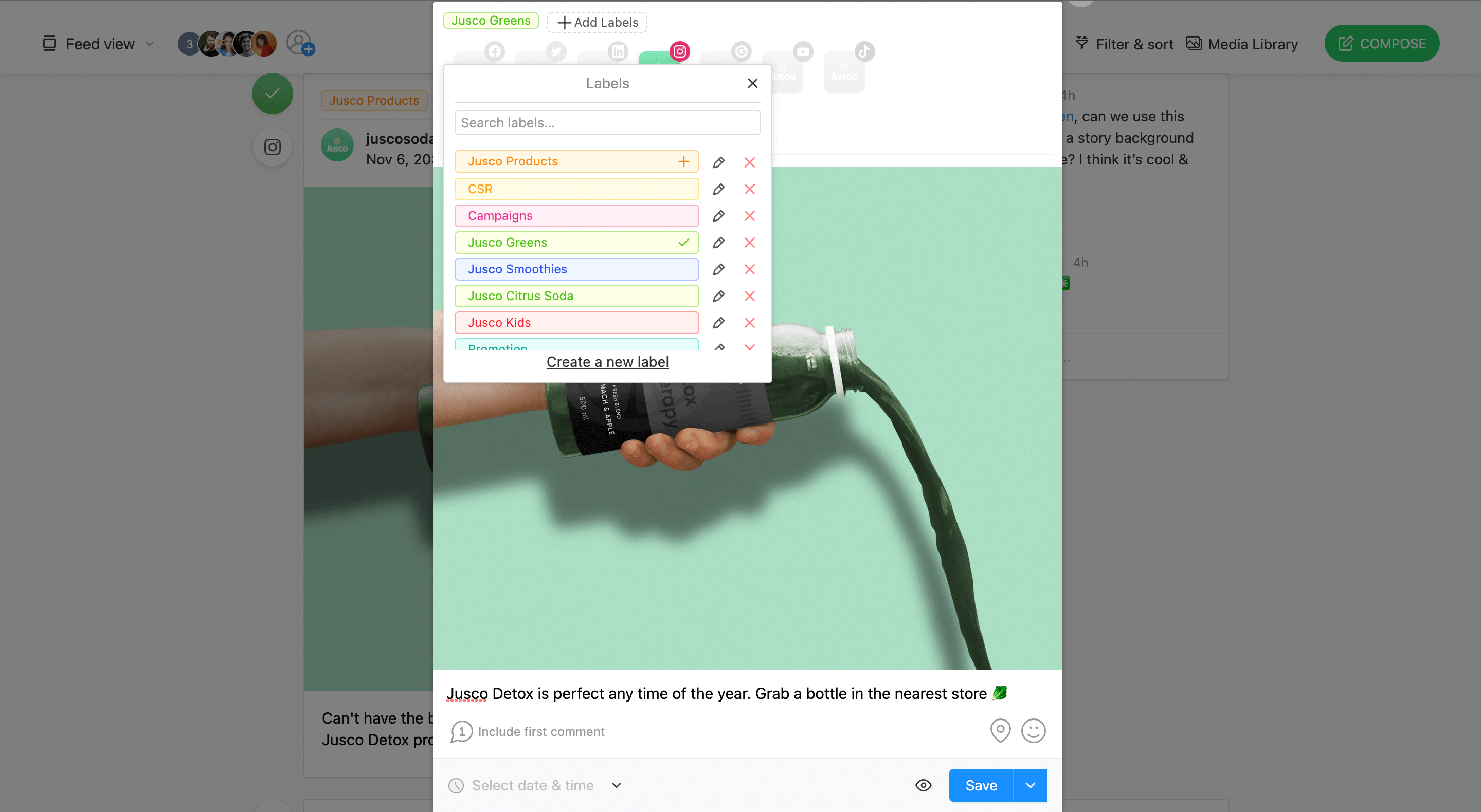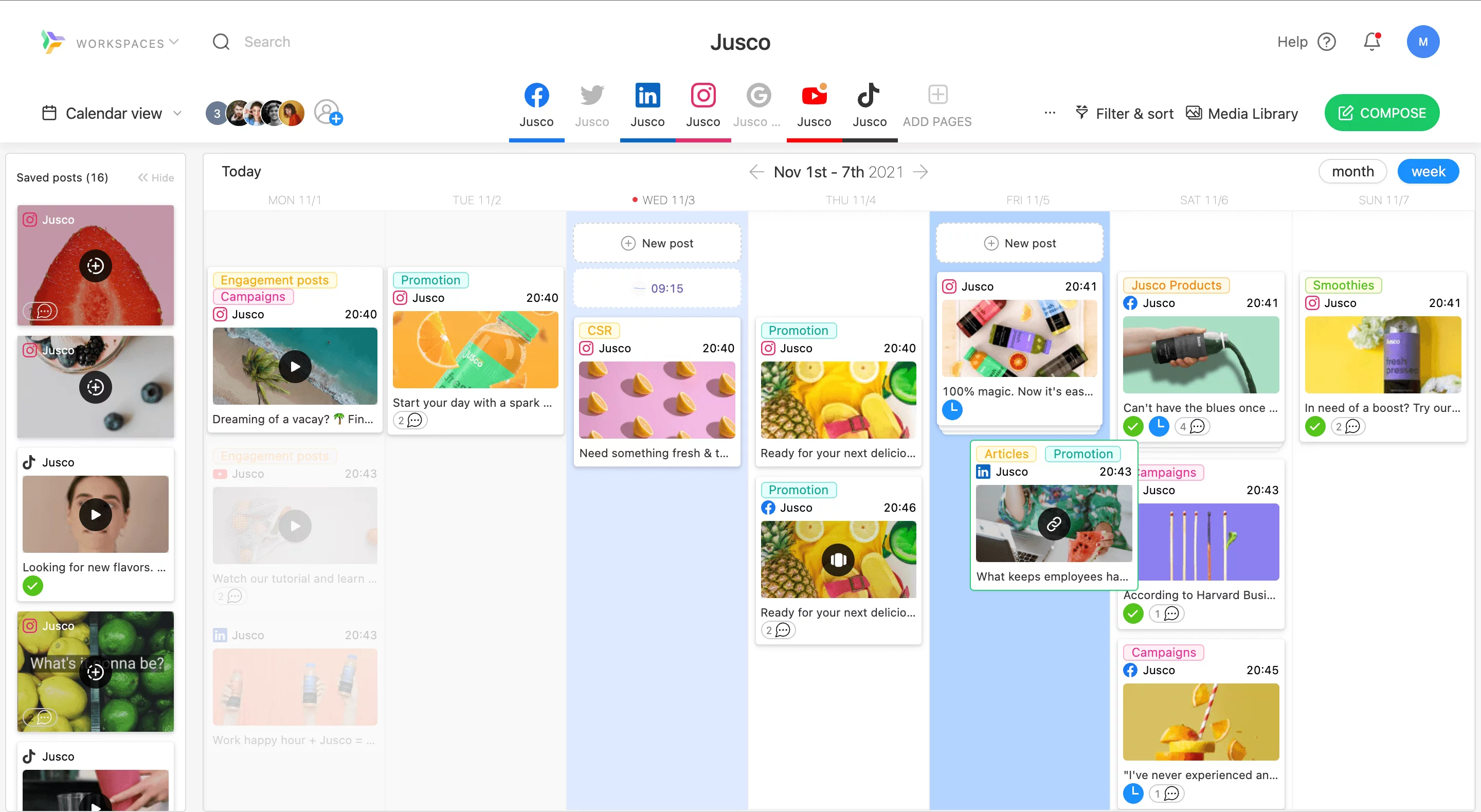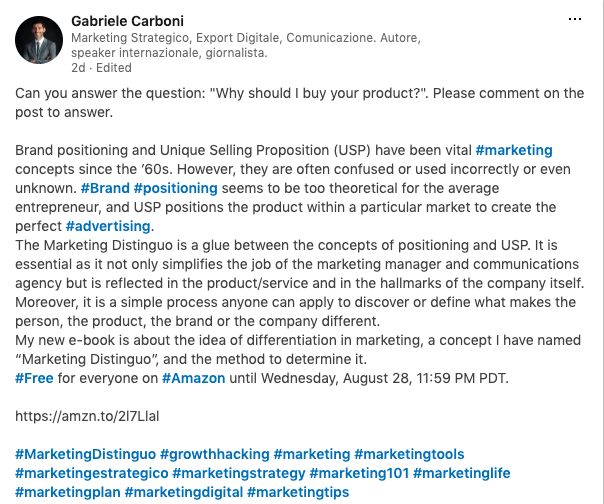Nowadays, there’s a strategy for anything. It almost feels like professionals don’t move a finger without having a strategy in place. Or at least they claim they don’t. This means execution is only one crucial step in the big marketing scheme, and it only happens after long rounds of research and strategizing.
Strategy has found its place at every marketer’s table. But, it was only a thing after marketers managed to identify some of the most important modern marketing concepts.
So yes, experts found five significant types of marketing concepts that allow us to find common ground between customers’ needs and business needs. Below, I’ll tackle the main aspects you should know about and how to apply them in your daily tasks.
Jump straight to each of the marketing concepts:
- The societal marketing concept
- The production marketing concept
- The marketing concept
- The advertising concept
- The selling concept


What are marketing concepts?
Marketing concepts are foundational approaches that guide how a business identifies customer needs, creates a value proposition, and executes strategies to engage with its target audience.
These concepts often include:
- Societal marketing concept, which considers societal well-being in addition to customer satisfaction
- Production concept, which focuses on mass production and cost efficiency
- Product concept, centered on product quality and features
- Selling concept, which emphasizes aggressive sales techniques
- Marketing concept, which prioritizes understanding customer needs
- Advertising concept, which aims to attract customers through various paid platforms and mediums
Each concept has its own set of tactics, metrics, and goals, shaping how a company markets its company’s products, or services.
Let’s start with God: Philip Kotler and his view on marketing concepts
I’m sure you read at least one of Philip Kotler‘s books. Back in my university years, Kotler was a God. And for a good reason: he dedicated his life to numerous marketing generations as a professor and author.
Marketing Management and Principles of Marketing are the most appreciated books I know. He came up with the essential concepts in marketing, and since then, marketers all around the world are building their strategies based on his ideas. Kellogg School admits it:
“Thanks to Kotler and Levy, concepts such as branding, analytics and cause marketing exist in their current forms.” https://t.co/TSlhrV3vkA
— Kellogg School (@KelloggSchool) 19 June 2017
The father of modern marketing management started from a simple but powerful idea: “The best advertising is done by satisfied customers.” From that moment on, every action revolved around knowing your target audience. And it still applies in 2024. Here’s prime example of what Jake Howard, Marketing at UpSouth Media, said about it back in 2019 — still valid today:
The 7 Ps of Marketing:
Product
Price
Place
Promotion
Packaging
Position
People
In 2019 I would suggest that one of the most important things is understanding who your target audience is and where you can find them (Twitter, FB, LinkedIn, etc..). I also would suggest you test what works best for you and focus on what gets the best results. “If it isn’t broken, don’t fix it.” Some people end up running 30 ad campaigns when they likely could see results by just putting more money into the 2 or 3 campaigns that have been the most effective for them.
If you’re interested in marketing management and want to learn more about the marketing concepts for teams, I recommend you read some of Kotler’s books. However, for now, let’s nail it down to the five most important ideas you can use for your business. I’ll add some of the best examples from our favorite brands with unique stories.
Speaking of mastering marketing concepts, our free email course offers practical insights on key strategies, helping you apply proven techniques to your social media efforts:
Before the actual top marketing concepts: are they actually applicable?
We’ve all gone to school, we’ve all faced the same problem: theory is great, but how does it actually apply to the day-to-day work? The thing about marketing concepts is that they’re very theoretical. They stand at the basis of deep understanding of marketing strategies and how you design your go-to-market plan template.
Sure, jotting down your core values in a doc is a good first step, but breathing life into them through your marketing and content — that’s where the magic happens. Saying you stand for something is easy; consistently showing it is a whole different challenge.
And let’s not forget about service objectives. These aren’t just fancy words in a business plan; they guide you to your target audience, help you refine your service offerings, and give you the metrics to gauge whether your marketing strategy is a hit or a miss.
When you’re moving from theory to practice, make sure your content marketing workflow has a way to:
- Integrate your marketing concepts
- Visualize all your content in a calendar
- Give you an overview of how balanced/ unbalanced your efforts are
- Give clarity to all the stakeholders involved on why you’ve chosen a particular piece of content on a particular day.
A huge help in the implementation step is a dedicated content marketing tool, that supports your workflow and ensures clarity for your marketing concepts execution.
Planable is your best friend with a few straightforward steps:
1. You create labels:


Setting up labels for content in Planable
2. Each time you create a post, you attach a concept to it:


Social media post with lables
3. You and your stakeholders have the overview, you drag and drop until perfect balance:


Marketing calendar
Check it out yourself, the first 50 posts are free, no credit card required, no time limit. Sign up free.
Check out our top picks for Hootsuite alternatives in 2024 💡
The marketing concepts you should use
Throughout the years, many marketing concepts emerged based on customers’ needs. However, even so, the ones Kotler revealed still play a considerable role in our day to day work. Starting with the core marketing concepts is a great kickoff.
1. Societal marketing concept: society first
I think practicing what you preach was born at the same time as the societal marketing concept. This concept puts people’s prosperity above everything else. It is based on the idea that to beat your competitors, your strategy should aim to take care of your customers (society included) and to put profit second.
What differentiates this concept from others is that it also takes into account the long-term strategy of the society the business activates in. Societal marketing is not the same as social or social media marketing (you can learn the difference in one of these courses. At its core, the actions resulted from this type of activities are close to what corporate social responsibility does. Sustainability is the primary factor for the business and the environment.
Societal marketing started in the ’60s and ’70s, but it became the most important marketing concept in the 21st century. Why? Because global warming crashed the party. This environmental wake-up call forced companies to think twice about how they use resources.
The societal marketing concept is based on three interlinked aspects:
- Society and human welfare. In every action, product, service or innovation, the company must put society first;
- Consumers satisfaction. Products and services should be created to satisfy customer’s needs;
- Company profits. By taking care of human welfare and providing comfort, your business will make a profit and will maximize its wealth in the long run.
Examples of societal marketing concept
One of the most common examples of societal marketing campaigns is the Coca Cola Super Bowl Commercial 2014 “America The Beautiful.”
Another recent example comes from Nestlé. The company is on a mission to make farming and farmer’s life better. So they will have resources to cultivate quality cocoa that will be transformed into premium chocolate.
Samsung is also a great example of ways of applying the societal marketing concept. Samsung Technical School is a project that empowers girls to follow their dreams.
Interested in more recent commercials? Check out the 2022 Super Bowl ads for a round-up of the best and the worst.
2. Product concept: customers want features
The product concept focuses more on the customers, rather than society. At the core of this concept is the principle of quality, performance, and innovation. By that, I mean businesses are customer-oriented, but they satisfy their needs through their product development and provide flawless and innovative features too.
These companies don’t mess around. Their products are always top-notch. They’re the niche pioneers, constantly refining their product management. They listen to user feedback and make real changes. They can’t place any product on the market and expect people to like it, but rather enhance their technology with every new release and become the best that’s out there.
But this is not sustainable, or scalable. Also, the very nature of this phenomenon is hard to predict because, in the end, the top of one’s game is subjective.
Just like Gabriele Carboni, the creator of Marketing Distinguo card deck, says, why should anybody buy your product if you can’t convince them?

If you want to find businesses that build their strategy based on the product concept, you should look for the premium products on the market. I bet you already thought about Apple because yes, Apple is the best example of a business based on the product concept. They just released their new Apple Card, the answer to the change in customers’ behavior in the last few years.
However, active businesses like Apple and Google are not the only examples you should follow. Lately, more and more startups outperform influential established companies that didn’t find resources to reinvent themselves. Just look around you: Stripe, Strava. Here are some more visual examples of what these companies do:
Production concept: supply creates demand
The production concept was born at the same time as Capitalism. The production concept focuses on… you guessed right – production. This means products should be made and in the end, you will find somebody to buy that product. Therefore, “Says Law” (from the Jean – Baptiste Say, a well-known economist) states that every product has a market and an audience.
Production concept translates into a mass production strategy. Meaning that if you increase production, you will decrease costs.
However, not many businesses can afford to use this concept anymore, as it doesn’t concentrate on customers. Those who still do it, are focusing on the economy at scale: mass-producing their products, decreasing costs and maximizing profits.
If we want to see some examples from today’s era, we should look at operations-oriented businesses.
Here are some great examples of production marketing concept:
Ford started by producing cheap and mass-produced cars. And they still do it nowadays.
McDonald’s and fast food chains in general also aim to ace their operations.
3. Marketing concept: customer-centric marketing strategy
Love brands – most of them establishing their strategy based on the marketing concept. This concept is the one that puts the customer at the core of every business activity. Product, advertising, sales, it’s all based on market research. So as we all fight with the fast pace of industry changes, the marketing concept is a great choice when we want to adapt our products to reality. Therefore, market research is an ongoing process.
The marketing concept is also known as the “pull strategy,” meaning businesses are so powerful, customers will always return and buy more. In this case, the profits result from customer satisfaction and loyalty.
Want an example? Samsung not only creates its products tailored to customers’ preferences, but it also adds many incentives in its strategy. A good example is their popup store.
However, probably the best example of this concept is the Coke vs. Pepsi war. Think about your choice as a simple consumer: I bet you are either a Pepsi or a Coca Cola fan. There is no in-between.
4. Advertising concept
The advertising concept focuses on more than just getting eyes on your product; it aims to educate and convert your target audience.
It’s a basic act in which businesses aim to make people aware of their services with the help of a medium. This also helps in educating your consumers about the product they’ll be signing up for. However, advertisements are done in various ways. This includes LinkedIn advertising, Google Ads, radio, emails, SMS marketing, and much more.
Not only is it helping your business with gaining traffic in the most natural ways, but also the targeted one which helps in higher sales conversions. None of this accounts for whether the medium has to be online or offline. Both of them work differently on the respective audience you’re targeting. You have newspapers and leaflets in the offline medium. Whereas, the online medium gives out tons of extra possibilities in comparison to offline.
You can use newsletters, email marketing campaigns, Google ads, banner advertisements, and much more which can help scale your business even on a global level. Newsletters are easy to create and there are tons of free newsletter templates available online too. Once you’re moving your business to an online platform, choosing a website hosting provider that fits your needs is the first important step of the process.
5. Selling concept
The selling concept also focuses on potential customers, except it doesn’t have a genuine approach. Businesses that have the selling concept at their core work on the belief that consumers won’t buy their product or service unless they persuade them to.
Not long ago, people didn’t have many options, and it was not so hard to convince them to try your product. Today’s environment changed the game rules entirely.
If what mattered before was the cost and the proximity, today’s customer is aware of many things and consumes a lot of information before making a decision. This is how selling became a marketing concept.
There are various opinions about this concept. Some experts say it was only used during WWII, and it was an aggressive way of doing business, others say selling is still a viable concept in the marketing scheme. And for a good reason: there are still businesses who put selling at the foundation of their activity, especially when their product benefits are hard to explain. Need an example? MetLife and their touchy life insurance strategies.
Now that you know multiple marketing concepts: want to give it a try?
As you might’ve guessed, you can use one or more marketing concepts. I won’t recommend you use more than two, though, as you won’t be able to allocate your resources in so many areas. Here’s a short guide on how to apply these concepts:
- First of all, see where your business is at. If you’re a new business, congrats! You can choose wisely the best idea that fits your values, your market, and your product decision. If you’ve been on the market for a while, you’re probably using a marketing concept but might not be aware of it.
- When you’re a new business, you choose the marketing concept and build your strategy accordingly. If you have a mobile app, you won’t need to search for concepts and marketing strategies that aren’t relevant to your business. You’d want to look up mobile app marketing concepts in this particular case. If you are already on the market, map the key points of your plan. What marketing concepts define them best?
Which marketing concept is best?
There’s no right or wrong marketing concept, but to be honest, for the times we live in, a combination of societal and marketing ideas works best. People-oriented strategies will always succeed, but I have to be honest: it takes more time to close some deals. In the end, chances are you close more deals than everybody else, and if your effort is constant, nothing can stop you. Go get them!
It’s not wrong to base your work on other marketing concepts. If your niche is super specific, for example, you probably need sales. So in the end, you and your marketing team should decide which marketing concept is best for you.
Toolstack: what tools to use when implementing your marketing concepts
Here, the situation is very clear: if you want to scale your concepts, you need technology in most of your business scenarios. Deciding on the right tools will eventually lead to hitting important milestones, so choose wisely.
Just to give you a heads-up, here are some of the tools you can start with:
- For advertising, ConnectRetargeting allows you to retargeted visitors; therefore, increase your chances to convert by 70%.
- For content, Grammarly is your lifesaver. For 2021 internet users, there’s no bigger turn-off than bad grammar. Also, you don’t want your business to be associated with that, right?
- For social media, Planable will allow your team to plan, create, collaborate, and distribute your content across all the essential channels you have.
- For project management, I would suggest you use more than one tool, depending on your needs. Apps like nTask, Notion, Flow, ProofHub, and Airtable help you stay organized and also have an overview of the entire strategy.
- For research, Ahrefs is the best option. Bonus! You can always spy on your competitors.
- For user testing, UXTweak is your all-in-one platform. With their tools, you can collect customer’s feedback and finally understand the reasons behind user behavior.
That’s it from me. I hope you now have all the resources to conquer your industry with the best strategy based on your marketing concept. Now take some time and map out your next steps. Also, here’s an awesome list of marketing blogs to learn more about. See you in a bit!

